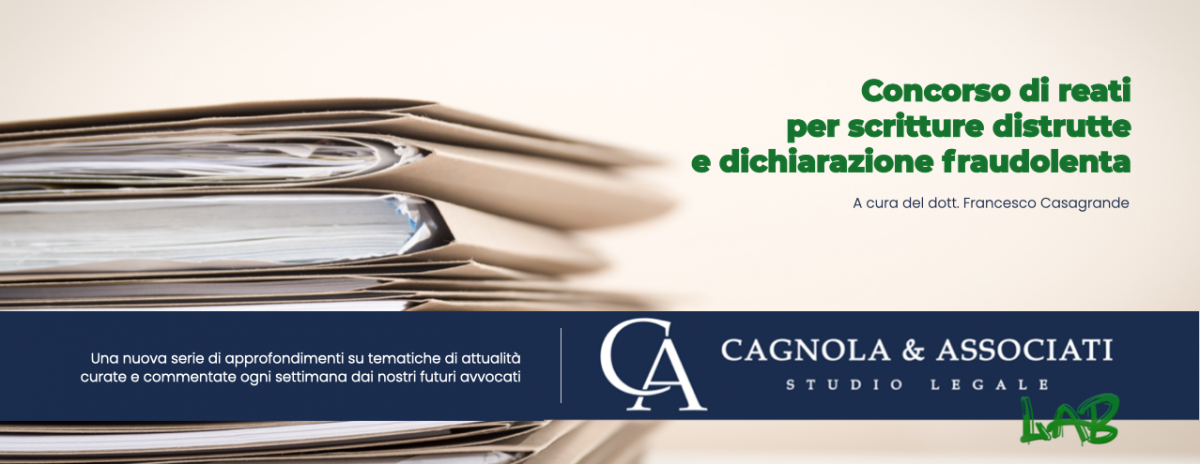Supreme Court judgment no. 4910, entered on 6 February 2023, enshrines the principle that the offence of concealment or destruction of accounting entries and the offence of fraudulent tax return using other ploys can constitute a concurrence of offences.
This statement is justified by the consideration that the concealment or the destruction do not constitute the simulated activities or other fraudulent and misleading means covered by the offence of fraudulent tax return.
For the sake of clarity, it is necessary to briefly overview the key points of the first and second instances of proceedings.
The trial courts sentenced an entrepreneur for fraudulent tax return, as in his annual tax return he had included fictitious liabilities based on a misrepresentation in the accounting entries, using fraudulent means (Article 3 of Legislative Decree 74/2000),and for concealing part of the accounting documentation subject to mandatory record-keeping (Article 10 of Legislative Decree 74/2000).
Through his lawyer, the defendant filed an appeal to the Supreme Court submitting, amongst other pleas, that if the offence referred to in Article 10 of the aforesaid Legislative Decree was found to have been committed, the offence referred to in Article 3 could not have been committed, as the two offences were the same.
The defence argued that the simple concealment of accounting documents effectively delivered to customers is already punished under Article 10, as the fraudulent means could not simply consist in the concealment of invoices.
Conversely, in dismissing the appeal, the Supreme Court established that the two offences can concur, as there is no apparent concurrence of laws or relationship requiring the application of one over the other.
This interpretation was supported by a reference to judgment no. 12455/2011, handed down by the Third Criminal Section and already cited by the trial courts.
The statement of reasons then goes on to say that in the offence referred to in Article 3, the use of the ploy (in the broad sense) is expedient to the false tax return, as it seeks to prevent its verification, using a similar pattern to the one used to commit fraud.
This is because the use of the fraudulent means seeks to mislead a taxable person, or the tax administration, with regard to the volume of income generated.
Instead, as the concealment or the destruction of accounting documents can be carried out in any manner, these actions do not necessarily constitute a ploy, as the perpetrator may well only destroy or conceal the accounting documents, without this being considered expedient to the false tax return, which in this case may not even be made.
From a subjective point of view, even the specific intent behind the two offences is based on the specificity of each of the offences: the purpose of a fraudulent tax return only consists in the evasion of income and value added taxes, while the offence of concealment may also include an alternative purpose of enabling third parties to evade.
Following the reasoning set out above, the matter clearly concerns two different offences: fraudulent tax return is an instantaneous offence underpinned by the perpetrator’s intent to evade, while the concealment and destruction of mandatory documents is a permanent offence of which the purpose can also be to enable third parties to evade.
So, based on these considerations, the Supreme Court concluded that there was no relationship requiring the application of one law over the other between these two offences.
® All rights reserved
Cagnola&Associati Studio Legale
